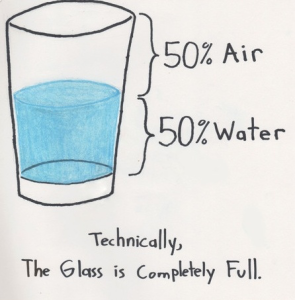 We must look at the lens through which we see the world, as well as at the world we see, because the lens itself shapes how we interpret the world. —Stephen Covey
We must look at the lens through which we see the world, as well as at the world we see, because the lens itself shapes how we interpret the world. —Stephen Covey
For better and for worse, we all have what psychologists call “personal constructs” —frames of mind through which we see ourselves and others. I’ll adopt Covey’s metaphor and call those constructs “lenses.” Our lenses act as both frames and cages: they add focus and definition to our view of the world but they can also be inordinately rigid and restrictive.
Early in life, our lenses were crafted by our family of origin and our local environment. In essence, we inherited our first set of glasses.
For instance, I was born into an Anglo-Saxon, Protestant, conservative family who lived in the southwestern United States. I have a friend who was born in Mumbai into a Muslim family. Our lenses are different.
Our lenses influence major and minor areas of our lives:
- Most of us worship the god of our fathers.
- Most of us adopted the political ideology espoused by our family or local culture.
- Items as trivial as the clothes we wear and our food preferences are influenced by our lenses.
Have you ever analyzed and critiqued the lenses through which you see the world? It is a healthy exercise. Doing so may,
- Cause you to change
- Solidify your perspective
- Help you understand others
- Encourage you to embrace diversity
- Be an antidote for intellectual apathy
It is not for the faint of heart.
One of the best ways to expose our myopic view of life is to travel extensively. When we experience foreign cultures, we learn that our modus vivendi is just one of many and may not be the best.
Summary
What? – We all view the world through constructs, lenses. Often, they are limiting.
So what? – It is advantageous to study our own lenses and to consider how they influence our worldview.
Now what? – Identify and analyze your lenses. It may take years to do this. Also study the lenses of your closest friends.
Leaders – Internally: consider the lenses of individual team members; consider how your organization as a whole is affected by restrictive perspectives. Externally, consider the lenses of your clients, customers and other stakeholders.



